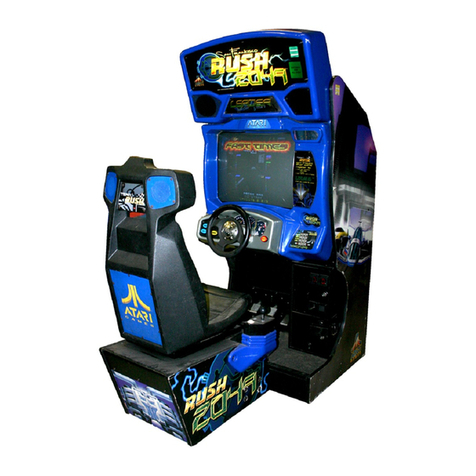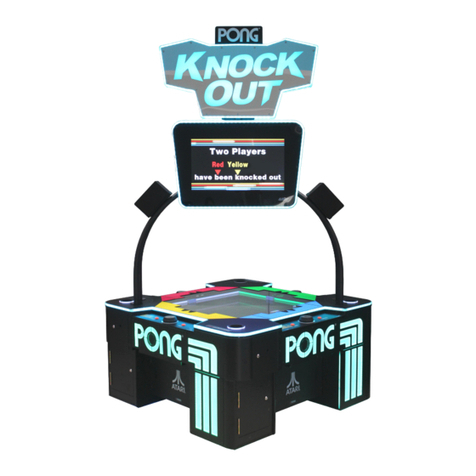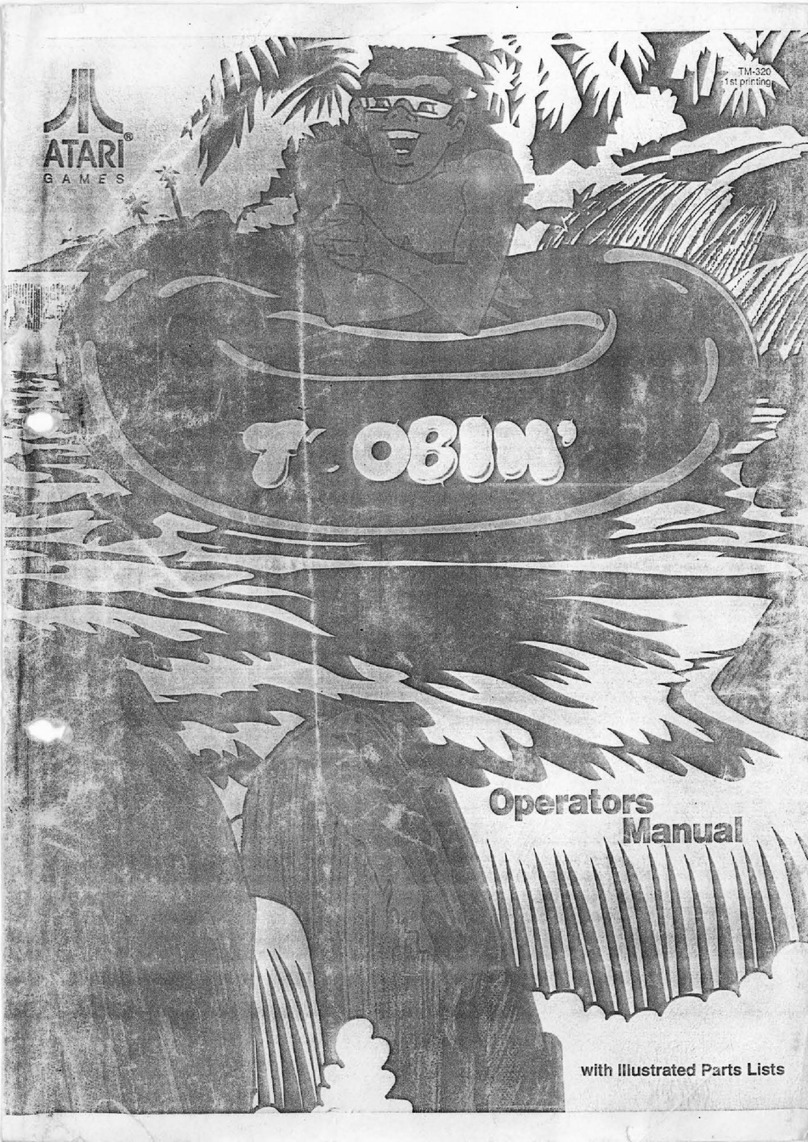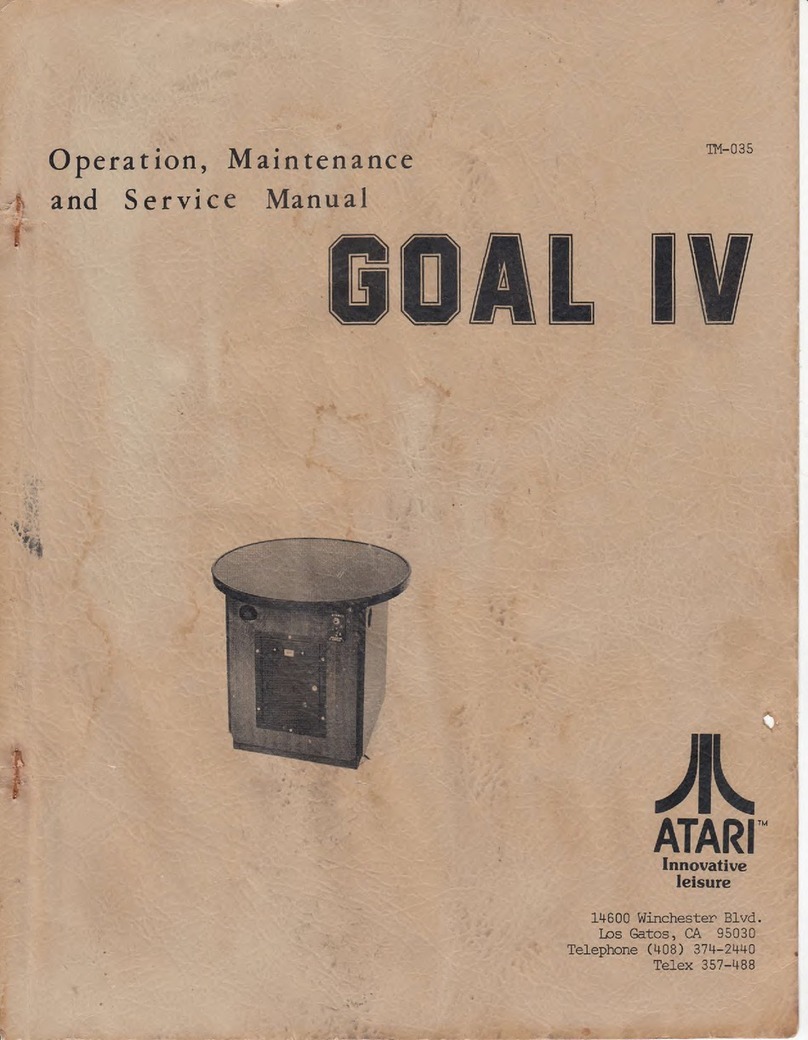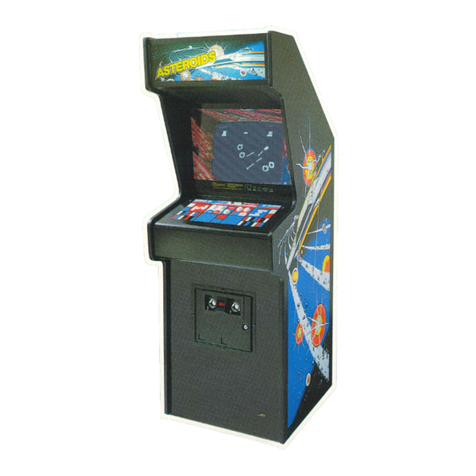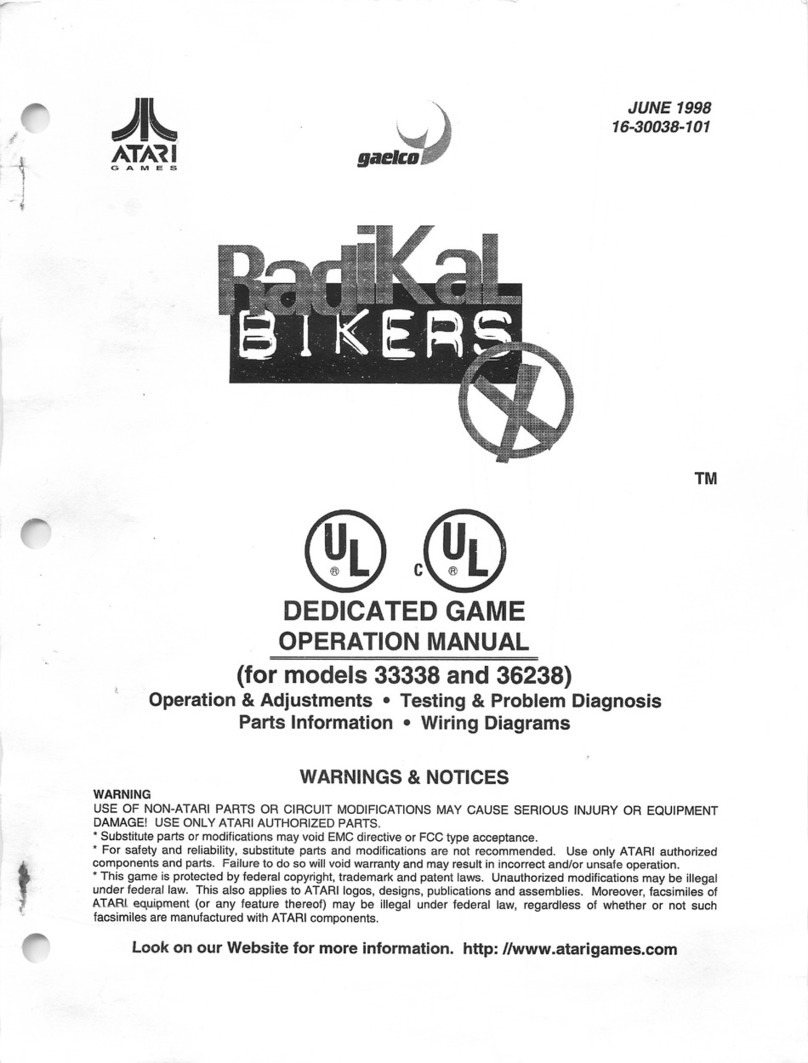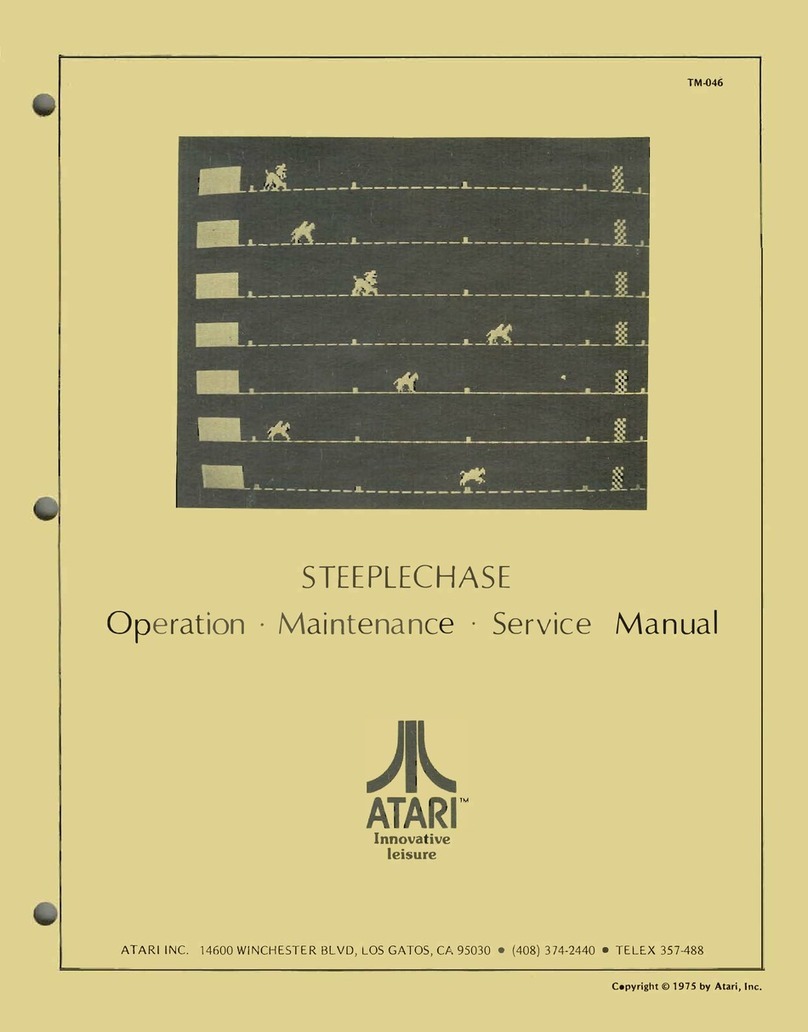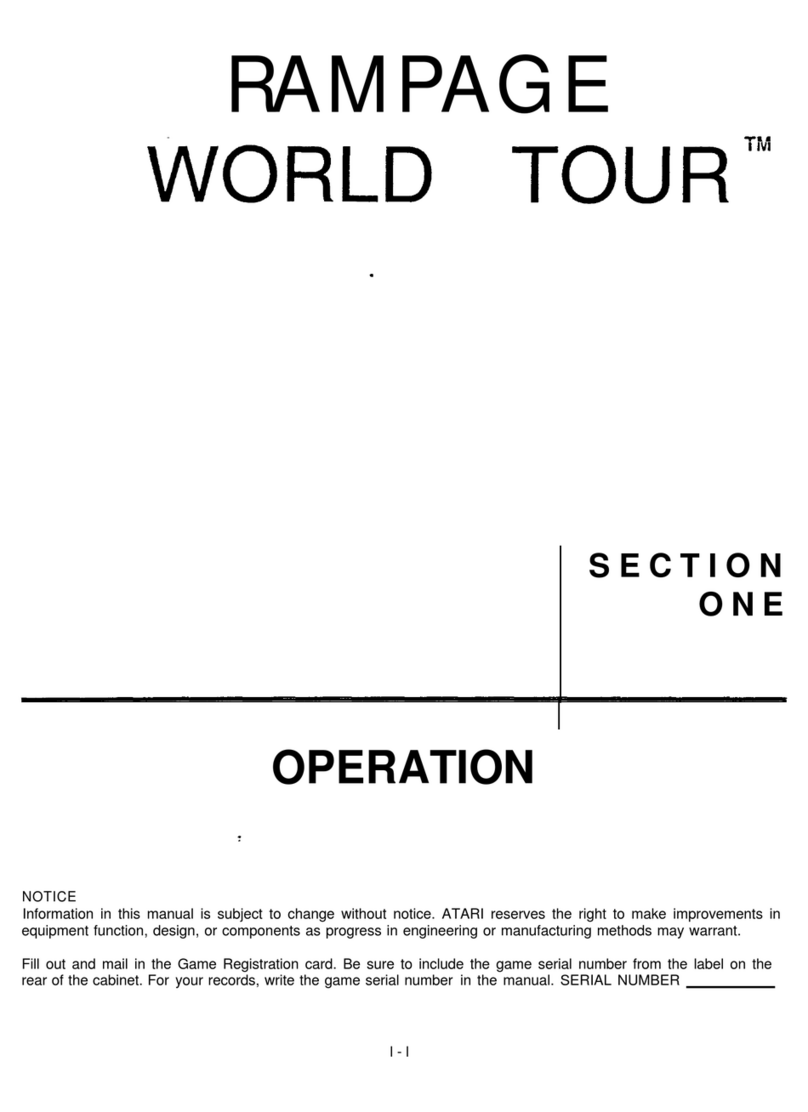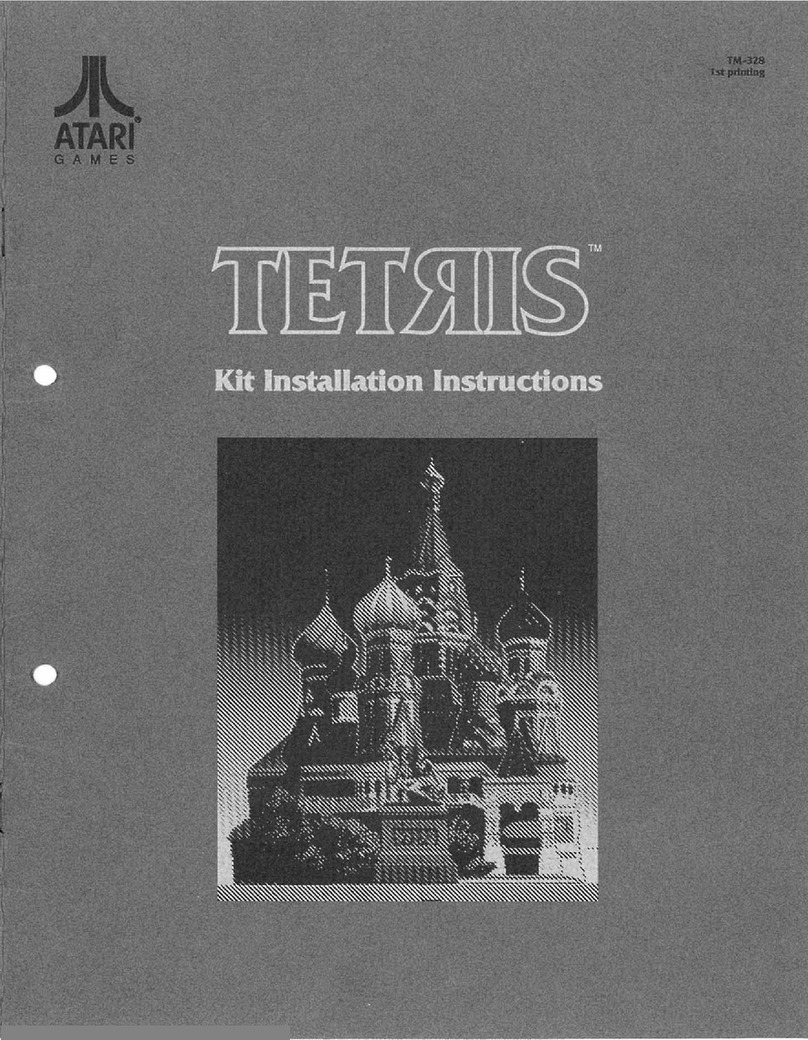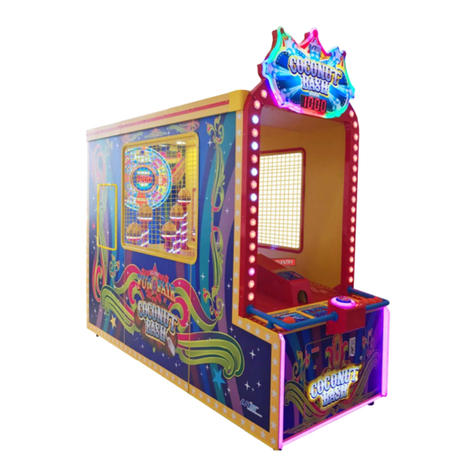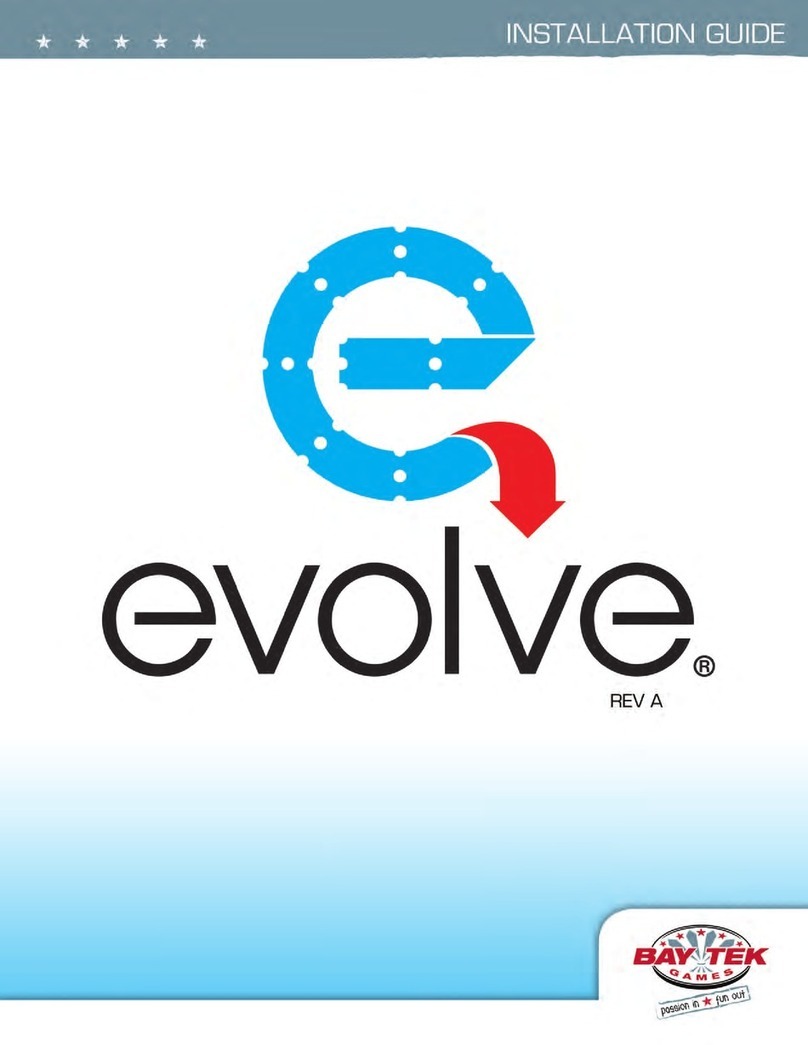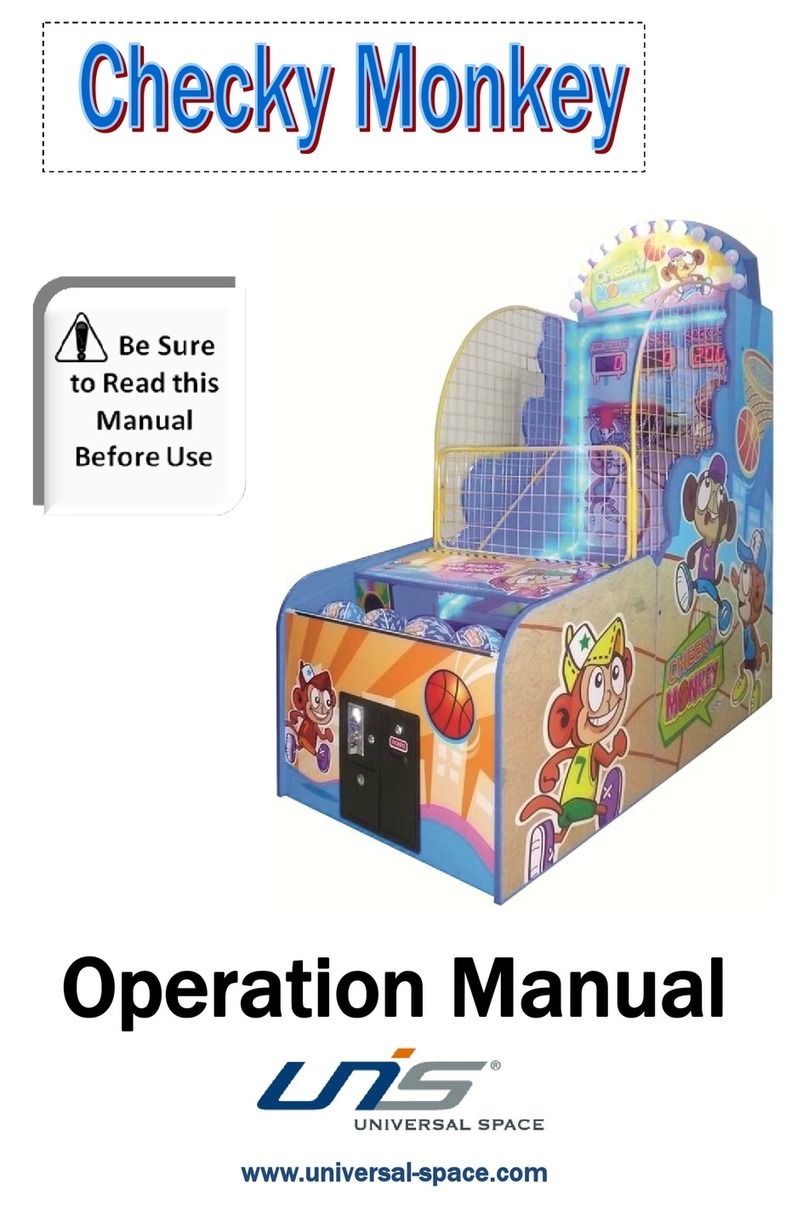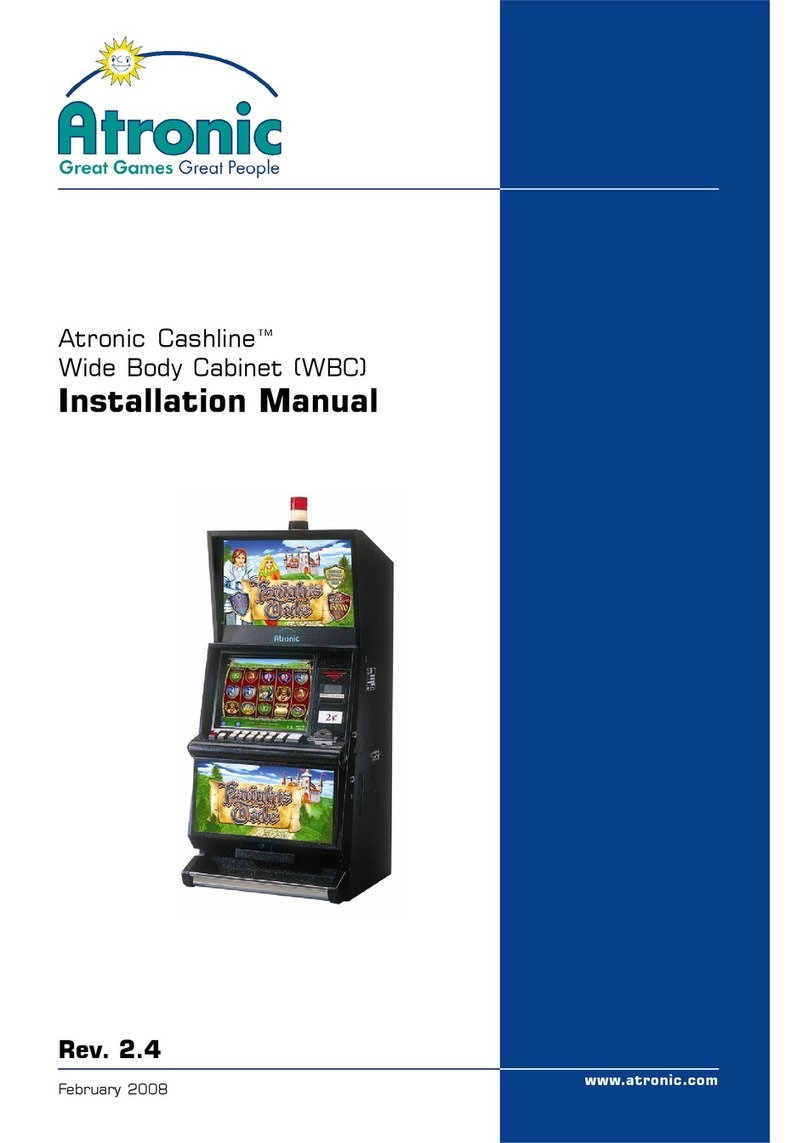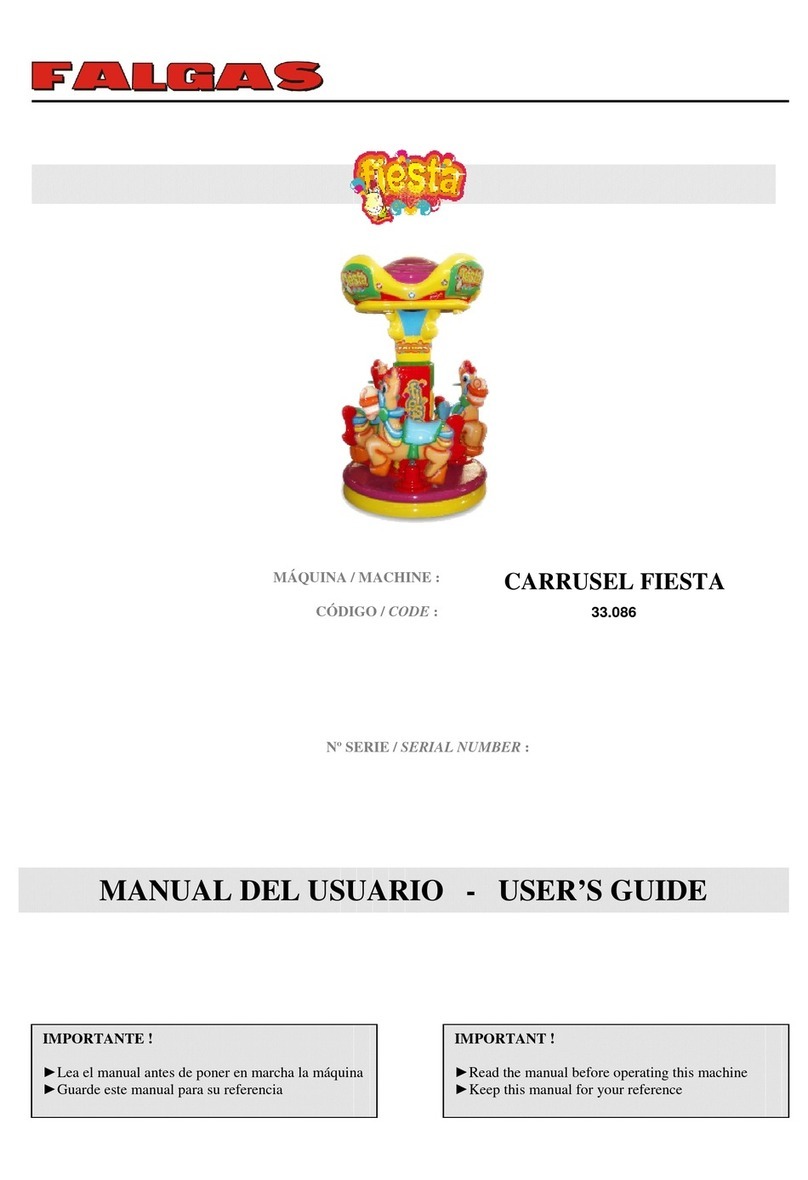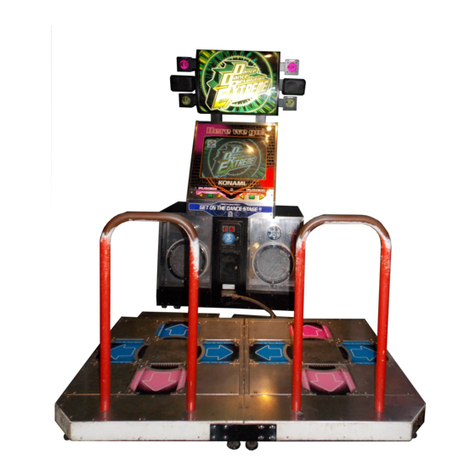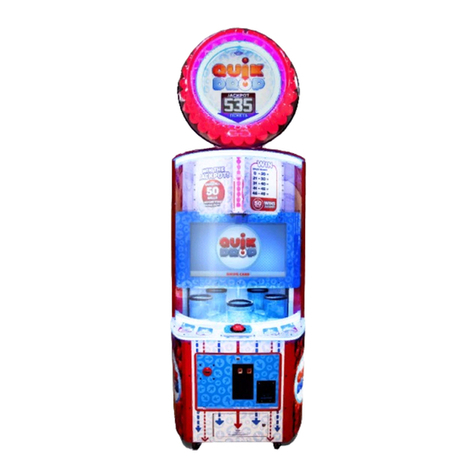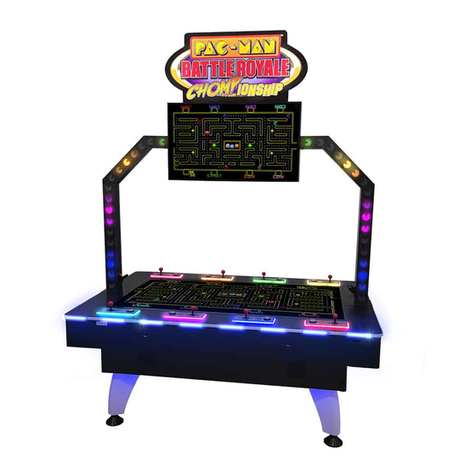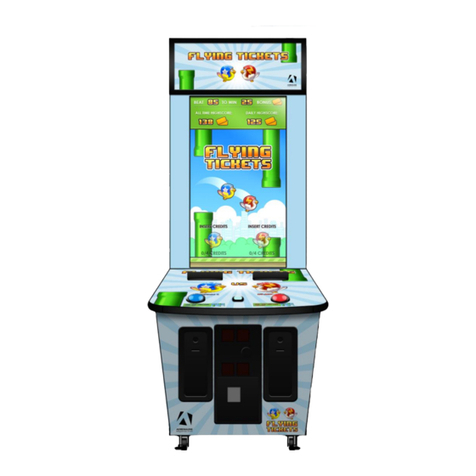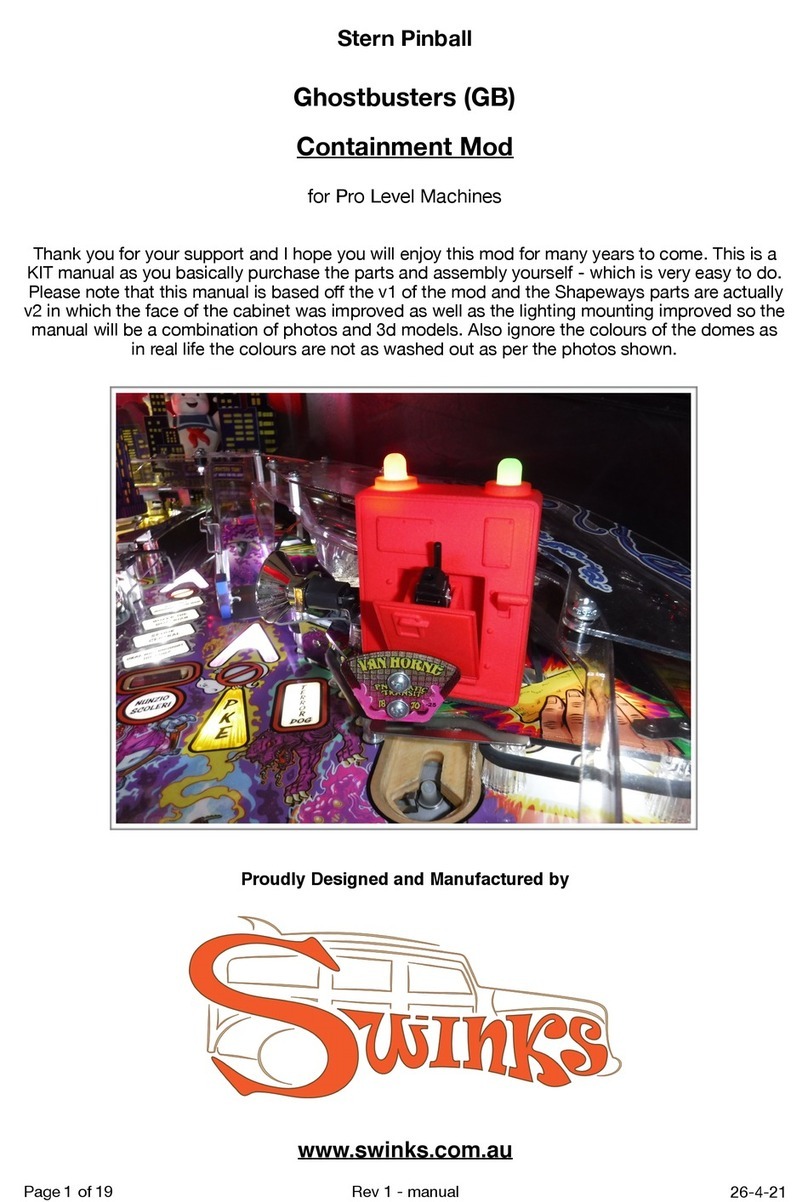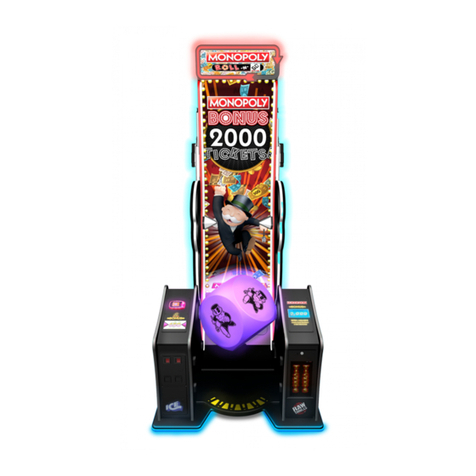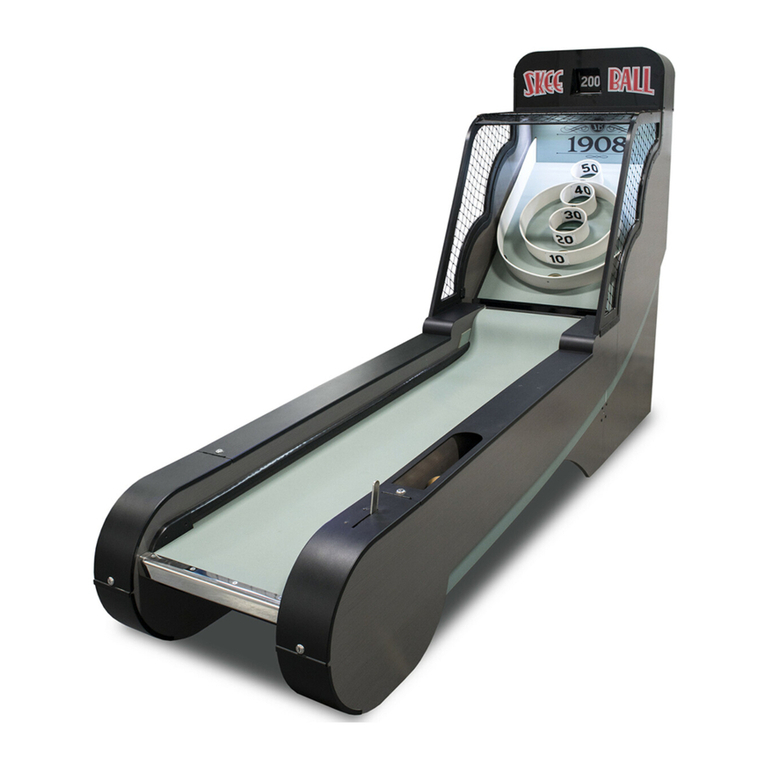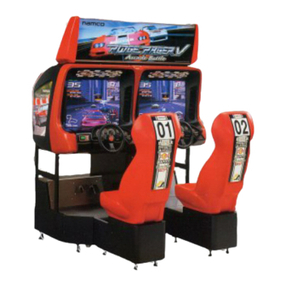
1
I.
INTRODUCT.
ION
1.1
PHYSICAL
DESCRIPTION
OF
GAME
Atari's
"Breakout"
is
a skiII-based
video
action
game designed for one
or
two
players. The game
is
packaged in its
own
distinctively-styled cabinet that
rests
directly on the floor.
Two
cabinet versions,
an
upright
cabinet and a cocktail table cabinet, are available. The
upright
cabinet
has a
19-inch
black-and-white
TV
monitor
mounted
behind
an
inclined
transparent
plexiglass
panel.
The
monitor
chassis is
tilted
back
in
a
nearly
horizontal
position
and
the
players stand
in
front,
looking
down
at
the
screen.
(Drawing
number
A004835
in
Section
VII
of
this
manual
shows
an
ex-
ternal
view
of
this
cabinet.)
Several strips
of
colored
transparent
material
are
affixed
to
the
glass
on
the
front
of
the
TV
tube.
During
play
these
strips
filter
light
coming
from
the
screen so
that
certain
portions
of
the
TV
picture
will
appear
highlighted
in
color.
One
set
of
player
controls
and
two
"start"
push
but-
tons
are
mounted
on
a
panel
near
the
bottom
end
of
the
TV
screen
nearest
the
players.
Two
identical
coin
mechanisms
also
are
mounted
on
the
front
of
the
cabinet,
below
the
player
controls.
They
accept
quarters
only
and
are
connected
so
that
either
can
initiate
play. The cash
box
is
located
behind
a
locked
access
door
to
the
coin
mechanisms.
A
speaker
is
mounted
in
the
top
portion
of
the
cabinet,
above
the
TV
screen.
During
play
it
produces
a
variety
of
sounds
that
add
to
the
game
excitement.
In the cocktail table cabinet the 19-inch black-
and-white
TV
monitor
is
mounted beneath the table top,
with
its screen facing up. The
TV
tube
is
recessed
below
the table surface and a transparent plexiglass sheet pro-
tects
it
from damage.
Two
sets
of
player controls, one
set
near each end
of
the
TV
screen, are mounted on flat
panels that are recessed into the table top.
Two
"start"
push buttons are also provided, one along
with
each
set
of
player controls.
Two
identical
coin
mechanisms are
mounted halfway between the
sets
of
player controls, on
a side panel
of
the rectangular-shaped
base
that supports
the table top. The cocktail table cabinet
is
provided
with
two
speakers; each
is
mounted on a side panel
of
the
base,
below
a
set
of
player controls. The speakers are
connected in parallel
so
thatthey both produce identical
sounds. (Drawing number A005610 shows
an
external
view
of
the cocktail table cabinet.)
1.2
SUMMARY
OF
GAME
PLAY
"Breakout"
is
a ball-and-paddle game in
which
a
player's objective
is
to
build
up the highest possible
point score by hitting balls toward a
wall
of
bricks.
Each
time
a ball hits a brick, points are added to the player's
score. Then the brick disappears and the ball rebounds.
Bricks at the rear
of
the
wall
are
worth
more score points
than those at the front. Player-accumulated scores are
displayed continuously on the
T.V
screen. Besides
re-
bounding
from bricks and from the player's paddle, the
ball
will
also rebound from the play-field's
two
sidewall
boundaries and from the backwall boundary behind the
walI
of
bricks.
The player controls consist
of
a lighted ''serve"
push button and a
"paddle"
knob.
Depressing the
"serve"
button causes a balI to appear on the
TV
screen
and start
moving
toward the player. Twisting the knob
causes
the
paddle
to
move
back
or
forth
along
a
straight-line path parallel to the end
of
the TV screen
farthest from the
wall
of
bricks.
During
play the player
must manipulate the knob
so
that the paddle
will
move
to a position that lies in the ball's path. If the player
succeeds in
doing
this, the ball
will
hit the paddle and
rebound back towards the walI
of
bricks. But
if
the
player misses, the ball
will
pass
by the paddle, continue
on and finally disappear from the
TV
screen. To cause a
new
ball to appear the player must then depress the
"serve"
button again. The game
only
serves a preset
number
of
balls, but the number
of
volleys made on any
one ball
is
limited
only
by the player's skill.
Players
will
receive a large number
of
score points
for a
"breakout,"
that
is,
for clearing away
an
opening in
the
wall
of
bricks and then paddling a ball back through
the opening. When this happens the ball rebounds back
and forth between the
backwall
boundary
and the
high-value bricks, thus adding
multiple
points to the
player's score for every brick hit. After a
"breakout,"
the
balI does not travel back toward the player's paddle untiI
it
finally rebounds back
out
through
an
opening in the
wall
of
bricks.
To make the game more challenging for skillful
players, during any one serve the ball speed increases in
steps
as
the player makes more and more volleys, and
it
immediately increases to the fastest speed
as
soon
as
a
brick on the back rows
of
the wall
is
hit. Besides these
increases in speed,
during
any volley when a
"break-
out"
occurs the
width
of
the paddle
is
reduced to one
half
its normal size. The play sequence ends after the
player misses a volley on the last ball served and that
ball
has
disappeared from the
TV
screen.
The
following
three types
of
sounds are produced
during
game play
as
the ball hits various objects: a
bounce
sound
when
the
ball
hits
the
sidewall
or
backwall boundaries, a
"blip"
sound when it hits the
paddle, and a
"tick"
sound for each score point when
it
hits bricks. A fourth buzzing sound
is
produced each
time a player's score reaches a preset achievement level,
provided
that
the game has been structured by an
owner/operator option
to
allow
bonus game credits.
In
a two-player game, on the upright cabinet ver-
sion the players take turns using the same
set
of
player
controls.
On
the cocktail table cabinet, each player
has
a separate
set.
The game's electronic circuitry includes a
memory that
"remembers"
the
brick
pattern indepen-
dently for each player. This feature insures that player 2
will
not benefit from player 1's skill at making a
"break-
out"
opening in the
wall
of
bricks, and vice versa.
On
the cocktail cabinet version only, at the conclusion
of
each serve in a two-player game, the TV picture
is
ro-
tated 180°. This
is
done
so
that the paddle end
of
the
screen
will
be closest to the player whose turn
it
is
to
depress the
"serve"
button.
